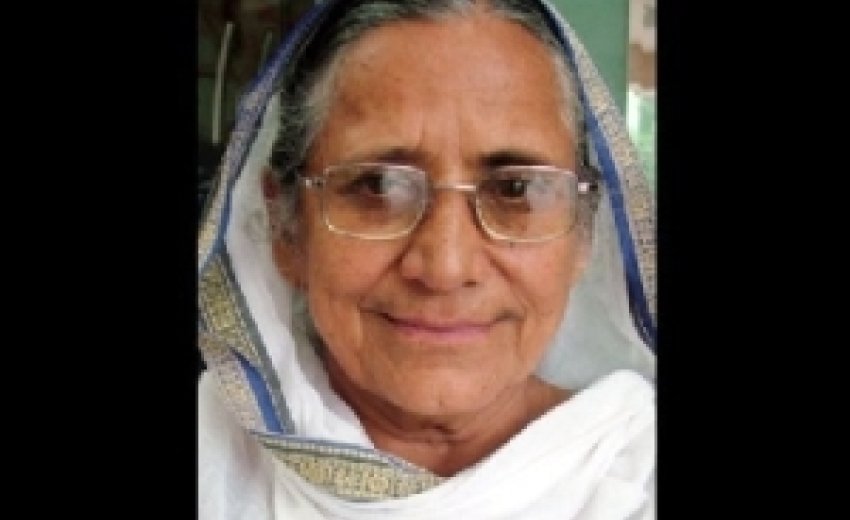03/22/2012: If you ask a Sikh about their religion, the first thing you will hear is belief in the Oneness of God. The second is that Sikh men wear turbans to cover their long hair, an article of faith which tragically became a target after 9/11 (See, I just did it). But if you linger a minute longer, you will hear us beam about the equality of women in our faith. Unlike in most other religions, our scriptures are explicit about women as equal in the eyes of God.
What if you asked for names of famous Sikh women? You will hear a short pause. Then, a slight effort in concentration, before: Ah ha! There's Mata Tripta, the mother of the first Guru! And Mata Nanki, the sister of the first Guru! And Mata Khivi, wasn't she the second Guru's wife? You will hear an earful of mothers, sisters, and wives of the Ten Gurus, or teachers of the Sikh faith in the 15th and 16th centuries. As the list ends there, you may begin to sense there is something amiss.
It's time to confront the gap between our ideals and how we live them.
Sikhs Americans like me talk a great deal about women's equality, but we are steeped in an old patriarchal culture that makes us complicit in the erasure of women, past and present. Even the few famous women in our history are defined in relation to their men. Their full contributions as thinkers, poets and warriors unto themselves are eclipsed by the men they supported. The real life consequence? Sikh girls today are told they're fully equal, and yet many are expected to carry out traditional gender roles -- with few role models to suggest otherwise.
|
Marianne Williamson Quotation: Our deepest fear is not that we are inadequate. Our deepest fear is that we are powerful beyond measure. It is our Light, not our Darkness, that most frightens us. We ask ourselves, who am I to be brilliant, gorgeous, talented, fabulous? Actually, who are you NOT to be? You are a child of God. Your playing small does not serve the world. There is nothing enlightening about shrinking so that other people won't feel unsure around you. We were born to make manifest the glory of God that is within us. It is not just in some of us; it is in everyone. As we let our own Light shine, we unconsciously give other people permission to do the same. As we are liberated from our own fear, our presence automatically liberates others. (erroneously credited to Nelson Mandela) |
This was a mistake. As we waited (and are still waiting) for the discrimination to pass over us, some of the cultural dysfunctions in our community worsened. Women are girls are always the first casualties within minority communities under siege. That is no different in ours. Just as in most patriarchal traditions around the world, the bodies of women have been considered vessels of honor in Punjabi culture. When riots and massacre swept Punjab during the 1947 Partition of India, some Sikh men poisoned their daughters before letting them fall into the hands of Muslim rioters. Today in America, while many Sikh families champion education and freedom for sons and daughters alike, others have tightened control over women and girls in the 9/11 decade. In the worst anecdotes, domestic violence is an outlet for men who bear racism on the street, intermarriage an act of betrayal, and honor killings an actual threat.
But there's another story too. The call for liberation pulses through the Sikh tradition: it's in our scriptures and songs and stories. Hearing the call, a new generation of Sikh women has emerged as lawyers, artists, entrepreneurs, doctors, filmmakers and more. They have found brave new ways to defend their communities while offering their own unique voices to public discourse. I am proud to call them my contemporaries -- they are sources of inspiration, wisdom and leadership in their communities who deserve to be known.
Here are 10 Sikh women who embody the highest Sikh ideal of the warrior-saint. Half are legends from early history -- women who we will never fully know but whose deeds ignite our imagination as the first female warrior-saints. Half are modern-day heroines -- each one stands for hundreds of Sikh women who are blazing their own paths as the warrior-saints of our era.
My hope is that the next time you ask a Sikh on the street about their religion, they will be able to name all these women. And you will already know their names.
#######
 |
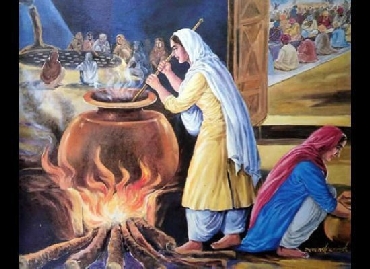 |
| The First Sikh Born in Chahal village (now Lahore, Pakistan), Mata Nanaki loved and nurtured her younger brother Nanak. In 1469, Nanak experienced a divine vision as a young man and became the first Guru or "teacher" of what is now the Sikh faith. Mata Nanaki was the first to follow him and should be celebrated as the first Sikh, which literally means "disciple" or "seeker of truth." |
The First to Serve Langar Mata Khivi followed Guru Nanak and prepared food for all who came to hear the Guru's spiritual discourse. When her husband became the second Sikh guru, Guru Angad, she presided over langar, a free and open kitchen, serving food to rich and poor of all castes and backgrounds. Today, every Sikh gurdwara in the world serves langar to the community. |
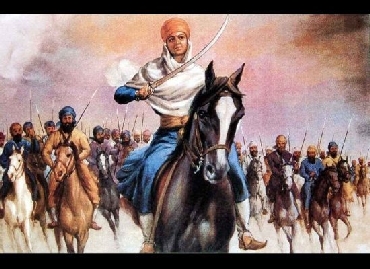 |
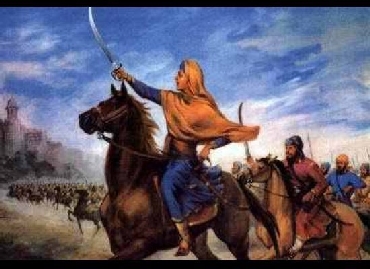 |
| The Fearless Warrior-Saint Born in Jhabal village (now Amritsar, Punjab in India), Mai Bhago grew up in a time when the 10th guru, Guru Gobind Singh, fought to defend Sikhs against Mughal forces and hill chiefs. During a great siege in 1705, Mai Bhago rallied 40 deserters and led them into battle herself, sword in hand. They died fighting and became known as the Chali Mukte, the Forty Liberated Ones. Afterward, Mai Bhago became the Guru's bodyguard, donning a turban and cross-dressing in male warrior attire. Today, she is revered as a saint. |
The First Woman Commander-in-Chief Rani Sada Kaur became a young widow when her husband was killed in a battle among Punjabi chiefdoms. She used the moment to transform herself into a woman-warrior, donning a high turban and weaponry. She commanded battles and laid the foundation for the Sikh empire, which spanned the Punjab from 1799 to 1849. She closely advised her son-in-law as he became the first Maharaja of the new empire, Maharaja Ranjit Singh. |
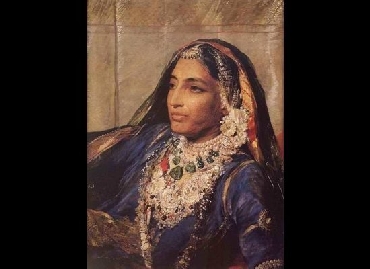 |
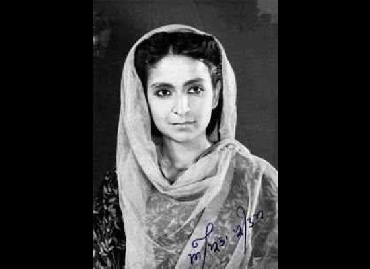 |
| The First Female Freedom Fighter Married to Maharaja Ranjit Singh, Jind Kaur was Maharani of the Sikh empire -- and the first female freedom fighter in the struggle to oust the British from India. After Ranjit Singh's death, the British annexed the Punjab through bribery and battle. Rani Jinda Kaur's revolutionary speeches and writings rattled the British who imprisoned her in Punjab, Nepal, Calcutta and finally, England, where she died in 1863 at the age of 46. She is credited for sowing the seeds of India's struggle for independence. |
The Great Poetess The leading 20th century poet of the Punjabi language, Amrita Pritam is considered the Sikh community's unsung heroine. She is the first prominent woman Punjabi poet, novelist, and essayist, equally loved on both sides of the India-Pakistan border. With a career spanning six decades, Amrita Pritam produced more than 100 books. She represents the rise of Sikh women in the humanities -- writers, artists, filmmakers, and scholars. |
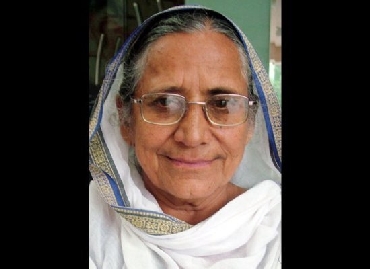 |
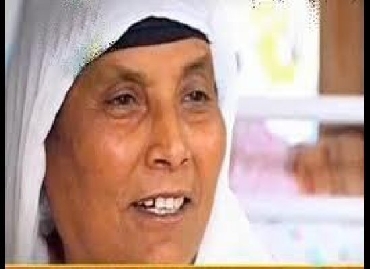 |
| The Fierce Social Worker A doctor by training, Inderjit Kaur is the President of the Pingalwara Charitable Society in Amritsar, Punjab in India -- a famous home open to the poor, handicapped, diseased, and mentally ill. Since 1992, she has carried the legacy of its founder Bhagat Puran Singh with her own bold leadership. She stands in for countless Sikh women -- doctors, nurses, health-care advocates, volunteers -- who care for the sick and poor. |
The Champion for Girls In a state infamous for female infanticide, Prakash Kaur runs a house in Jalandhar, Punjab for 60 abandoned girls. She was abandoned herself -- found a few hours old in a drain. Since 1993, she has rescued and raised unwanted and unclaimed newborn girls. She represents the many Sikh women fighting for women and girls against abandonment, domestic violence, sexual assault, and forced marriage. |
 |
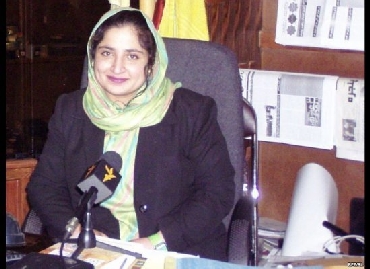 |
| The Civil Rights Lawyer A formidable civil rights lawyer, Amrit Singh was one of the fiercest U.S. critics of the torture and abuse of prisoners under the Bush Administration. As an ACLU attorney, she litigated cases on torture, indefinite detention, and post-9/11 discrimination. She now serves at the Open Society Justice Initiative. Her father is the 13th and current Prime Minister of India, Manmohan Singh. Amrit Singh represents a new generation of Sikh women lawyers, wielding the law as sword and shield in the battlefield. |
The Senator Anarkali Kaur is a human rights advocate and Senator in Afghanistan. As one of 3,000 Sikhs and Hindus in Afghanistan, she fights for the civil rights of minorities and women. When the Taliban was overthrown in 2001, she joined the Grand Council, Loya Jirga, to elect the interim government, and then helped draft the country's new constitution. She serves as the first non-Muslim woman member in the lower house of parliament. In 2009, at 25 years old, she was voted "Person of the Year" by Radio Free Europe's Afghan chapter, becoming a household name in Kabul. A modern-day "Mai Bhago," Anarkali Kaur represents the rise of brave modern-day Sikh women warriors. |
